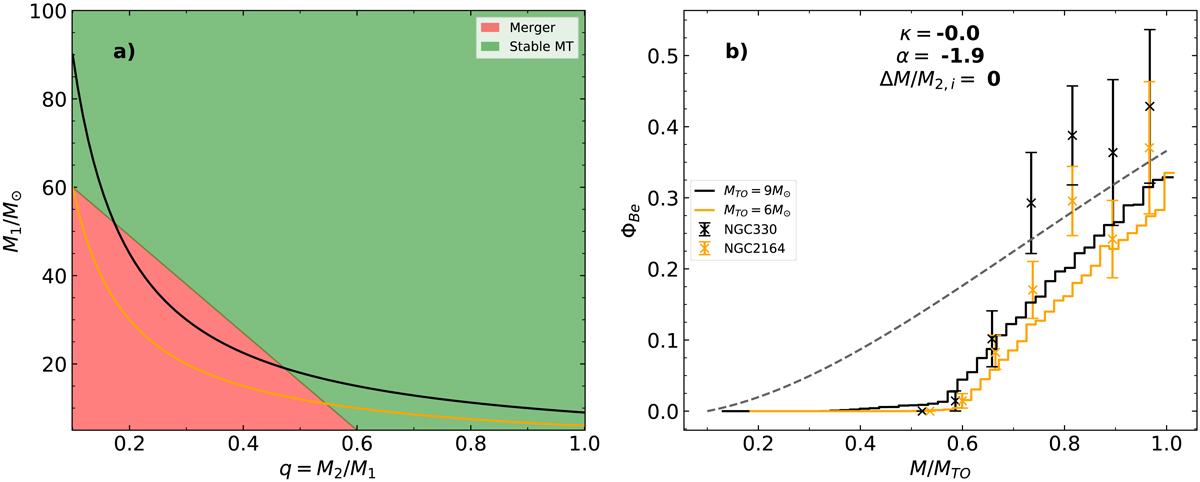Fig. 5.

Download original image
(a) Adopted region of stable mass transfer in the primary mass-mass ratio plane. Regions coloured red experience unstable mass transfer and merge. For green regions, mass transfer is stable, and a Be star is formed. The black and orange lines show systems with secondary masses of 9 and 6 M⊙, respectively. (b) Results of a Monte Carlo simulation showing the Be fraction, ΦBe, when the stable mass-transfer region in (a) is applied. Binary systems have a flat mass-ratio distribution (κ = 0), a primary mass distribution ξ(M1) ∝ M−1.9, and we have assumed inefficient accretion (ΔM/M2, i = 0). The black line shows a simulation with a turn-off mass of 9 M⊙, and the orange line a turn-off mass of 6 M⊙. The dashed grey line shows the theoretical upper limit, as given by Eq. (30). Measured Be fractions of NGC 330 and NGC 2164 according to Fig. 3 are plotted as black and orange crosses, respectively.
Current usage metrics show cumulative count of Article Views (full-text article views including HTML views, PDF and ePub downloads, according to the available data) and Abstracts Views on Vision4Press platform.
Data correspond to usage on the plateform after 2015. The current usage metrics is available 48-96 hours after online publication and is updated daily on week days.
Initial download of the metrics may take a while.


